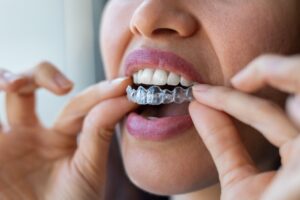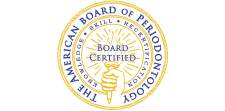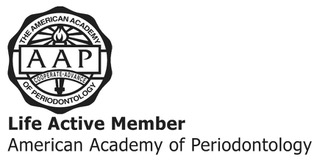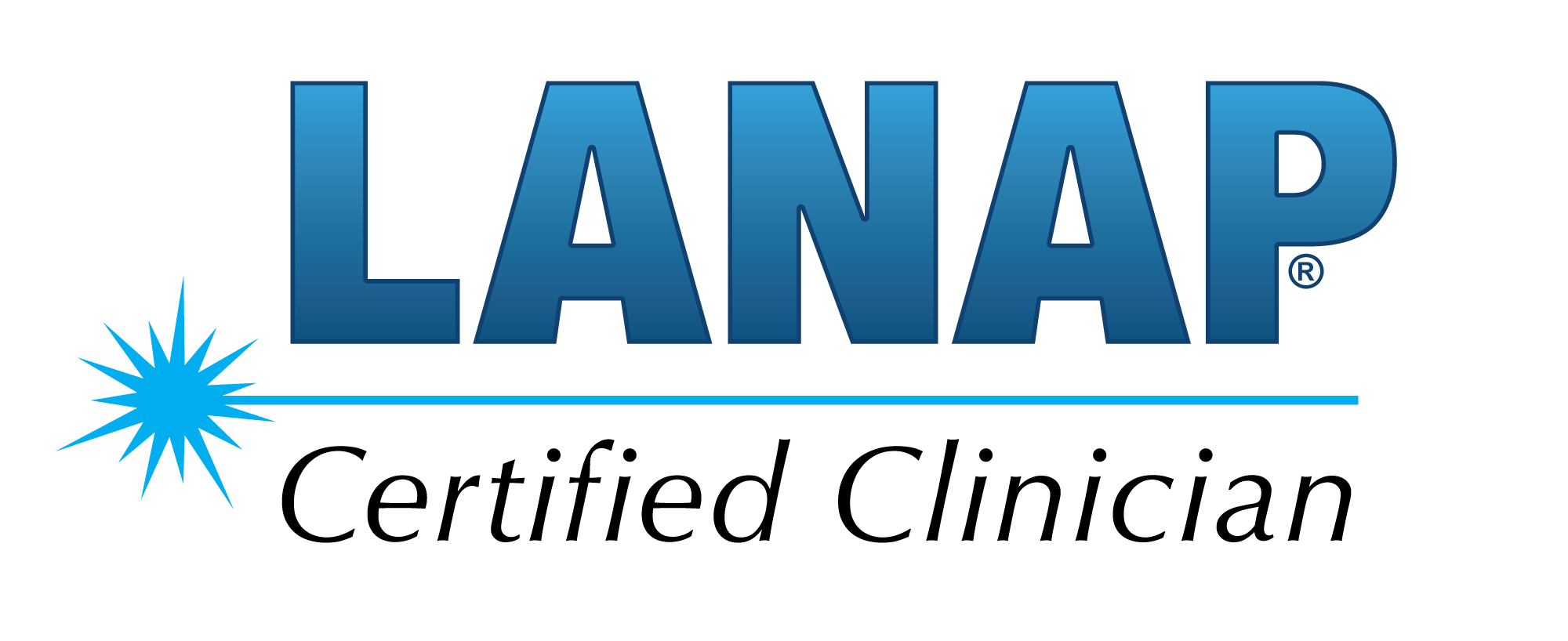Transform Your Smile with Invisalign at Newhouse Periodontics
Introduction to Invisalign
What is Invisalign?
Invisalign represents a groundbreaking approach to orthodontic treatment, allowing for correcting various dental alignments and bite issues through a series of custom-made, clear aligners. Unlike traditional braces, these aligners are virtually invisible. They can be removed for eating, brushing, and flossing, offering a flexible and discreet solution for adults and teens seeking a straighter smile.
The Invisalign Process Explained 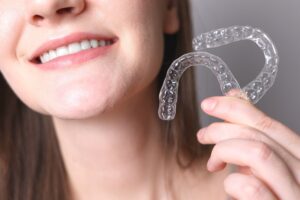
The journey to a beautiful smile begins with a personalized consultation at Newhouse Periodontics. Our dedicated specialists craft a tailored treatment plan using advanced 3D imaging technology. This plan outlines the step-by-step transformation of your smile, with each aligner designed to make slight adjustments to the position of your teeth, leading to a gradual yet remarkable transformation.
Why Choose Invisalign?
Benefits of Invisalign Over Traditional Braces
Opting for Invisalign has many advantages, including improved oral hygiene due to the aligners’ removability, fewer office visits, and no dietary restrictions. Moreover, the absence of metal brackets and wires eliminates the discomfort often associated with traditional braces, making Invisalign a popular choice for patients seeking a more comfortable and convenient treatment.
Customization and Comfort
Each Invisalign aligner is custom-fitted to the contours of your teeth, ensuring a comfortable, snug fit and effective treatment. This personalized approach enhances comfort and ensures optimal results, making your journey to a perfect smile as smooth and efficient as possible.
The Invisalign Treatment Journey at Newhouse Periodontics
Initial Consultation
Your Invisalign treatment begins with an in-depth consultation at Newhouse Periodontics. Our team uses this opportunity to assess your dental needs, discuss your goals, and determine if Invisalign is the right choice for you.
Creating Your Unique Treatment Plan
Leveraging the latest in dental technology, we create a detailed 3D model of your mouth to design a series of aligners to address your dental concerns. This plan provides a clear view of the treatment process and allows you to visualize the final outcome of your smile transformation.
Your Path to a Perfect Smile
With a clear roadmap, you’ll receive your custom aligners, each worn for about two weeks, before moving on to the next in the series. Regular check-ups at our clinic ensure your treatment is progressing as planned, leading you step by step to the smile you’ve always wanted.
Comprehensive Care Beyond Invisalign
Maintaining Your New Smile
Achieving your perfect smile is just the beginning. We’re committed to helping you maintain those results long after your Invisalign treatment concludes. Our team provides personalized advice on how to care for your new smile, ensuring its longevity and beauty.
Additional Services at Newhouse Periodontics
Beyond Invisalign, Newhouse Periodontics offers a wide range of dental services to meet all your oral health needs. From routine cleanings to advanced periodontal treatments, our comprehensive care ensures your smile remains healthy and bright for years.
Real Results and Success Stories
Before and After: Invisalign Success Stories
At Newhouse Periodontics, we pride ourselves on the smiles we’ve transformed through Invisalign. From minor adjustments to comprehensive corrections, our success stories are a testament to the effectiveness of this innovative treatment. We invite you to explore our gallery of before and after photos to see the real-life impact Invisalign can have on your smile and confidence.
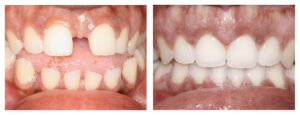
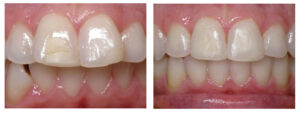
Ready for a Beautiful Smile at Newhouse Periodontics? Call Today!
Taking the first step toward a more confident smile is easy. Contact us today to schedule your consultation and discover how Invisalign can transform your smile and life. Our friendly, knowledgeable team is here to guide you every step of the way, from your initial visit to the moment you reveal your new, gorgeous smile.
Invisalign at Newhouse Periodontics offers a modern, efficient, and discreet way to achieve the smile of your dreams. With the expertise of our dedicated team and Invisalign’s innovative technology, we’re committed to providing personalized care that results in stunning smiles and lasting satisfaction. Embark on your journey to a more confident smile today and experience the transformative power of Invisalign.
FAQs
Q: How long does Invisalign treatment typically take?
A: Invisalign treatment duration varies depending on several factors, such as the case’s complexity, the amount of alignment needed, and how well the patient complies with wearing the aligners. Typically, Invisalign treatment can last anywhere from 6 to 18 months. However, minor corrections might take a shorter time, while more complex cases could require up to 24 months or more. Patients are usually advised to wear the aligners for 22 hours per day for the best results.
Q: Can Invisalign fix all types of dental alignment issues?
A: Invisalign is a versatile treatment option that can address many tooth alignment issues, but it may only be suitable for some cases. Here are the types of problems Invisalign can typically treat:
- Crowded Teeth: When there is not enough space in the jaw for all of the teeth to fit normally, Invisalign aligners can shift teeth into better positions.
- Overbite: This occurs when the upper teeth bite over the lower teeth. Invisalign can correct some overbites to a certain degree.
- Underbite: An underbite is when the lower teeth protrude past the upper teeth. Invisalign can be used to treat some underbites, depending on the severity.
- Crossbite: This happens when some upper teeth bite inside the lower teeth rather than on the outside. Invisalign can correct some cases of crossbite.
- Gap Teeth: Gaps between teeth can be closed using Invisalign aligners, improving appearance and function.
- Open Bite: An open bite, where the upper and lower teeth don’t meet adequately when the mouth is closed, can sometimes be treated with Invisalign.
However, Invisalign has some limitations in treating complex orthodontic issues. Severe cases of malocclusion (bad bite) or significant jaw alignment problems may require traditional braces or orthodontic surgeries to correct. Invisalign might not be the best option for patients with bridgework, certain types of bite issues, and those requiring vertical teeth or rotational movement for canines and premolars.
It’s crucial to have a thorough examination to determine the most effective treatment plan for your specific needs – whether it’s Invisalign or a more traditional form of orthodontic treatment.
Q: How often do I need to wear my aligners?
A: For Invisalign treatment to be effective, you should wear your aligners for about 20 to 22 hours per day. This allows the aligners to apply constant pressure on your teeth, gradually moving them into the desired position. You should only remove your aligners when you’re eating or cleaning your teeth.
Wearing your aligners for the recommended time each day is crucial for staying on track with your treatment plan. Not wearing them as advised can lead to delays in progress and may even require additional treatment time or adjustments to your plan.
It’s also important to switch to your next set of aligners according to the schedule provided by your orthodontist. This typically occurs every 1 to 2 weeks, depending on your individual treatment plan. Regular check-ups with your orthodontist are essential to monitor your progress and make any necessary adjustments to ensure your treatment is moving forward effectively.
Q: Is Invisalign treatment painful?
A: Invisalign treatment involves using a series of clear, removable aligners that gradually move your teeth into their correct positions. While Invisalign is generally considered less painful than traditional braces, it’s not entirely free of discomfort. Here’s what you can expect in terms of pain or discomfort during Invisalign treatment:
Initial Discomfort: When you start wearing a new set of aligners, you may experience some pressure and discomfort. This is normal and is a sign that the aligners are working to shift your teeth. This discomfort usually subsides after a few days as your teeth adjust to the new aligners.
Changing Aligners: Depending on your treatment plan, you’ll switch to a new set of aligners every 1-2 weeks. With each new set, you might feel some pressure and discomfort again, similar to when you first started the treatment. This discomfort is typically mild and should lessen within a few days.
Temporary Speech Issues: Some people experience temporary lisping or changes in their speech when they first start wearing Invisalign aligners. This usually goes away as you get used to wearing the aligners.
Oral Irritation: Unlike traditional braces, Invisalign aligners are smooth and don’t have metal brackets or wires that can irritate the mouth. However, some people might still experience mild irritation of the gums, cheeks, or lips until they get used to the aligners.
To manage discomfort, you can use over-the-counter pain relievers, such as ibuprofen or acetaminophen, as needed. Applying cold compresses outside the mouth can also help reduce soreness and inflammation. It’s important to keep wearing your aligners as prescribed (about 20 to 22 hours a day) to ensure your treatment progresses on schedule and to minimize discomfort.
You should consult with Dr. Newhouse if you experience severe pain or discomfort that doesn’t improve with time or over-the-counter remedies. They can check if the aligners fit correctly or if any other issues must be addressed.
Q: What happens if I lose an aligner?
A: If you lose an Invisalign aligner, it’s important to take action quickly to keep your treatment on track. Here’s what you should do:
- Wear the Previous Set of Aligners: Immediately start wearing your previous set of aligners to prevent your teeth from returning to their former position. This can help maintain your progress until you get a replacement.
- Contact Dr. Newhouse: Notify Dr. Newhouse or her staff as soon as possible. They will advise you on the best course of action. Depending on how long you’ve been wearing the lost aligner and your treatment progress, they might suggest moving on to the next set of aligners or ordering a replacement for the lost one.
- Move to the Next Set of Aligners (if advised): If you were close to the end of the two-week period for the lost aligner, Dr. Newhouse might recommend moving on to the next set. However, this depends on your treatment progress and should only be done under Dr. Newhouse’s guidance.
- Order a Replacement (if necessary): If you need to replace the lost aligner and cannot move on to the next set, Dr. Newhouse can order a new one for you. Remember that this might result in a slight delay in your treatment plan and could incur additional costs.
Losing an aligner doesn’t have to significantly disrupt your Invisalign treatment, mainly if you act quickly and follow Dr. Newhouse’s advice. To avoid losing aligners in the future, always use your aligner case when eating, or cleaning your teeth. Keep your previous aligners as a backup in case you lose the current set.
Q: How much does Invisalign cost, and is it covered by insurance?
A: The cost of Invisalign treatment varies widely based on several factors, including the complexity of the dental issues being corrected and the length of treatment. On average, Invisalign costs are comparable to traditional braces.
Insurance coverage for Invisalign is similar to that of traditional braces. Many dental insurance plans cover a portion of orthodontic treatments, including Invisalign. However, the amount of coverage can vary significantly between different policies. Some plans may cover a fixed percentage of the orthodontic treatment cost, while others may offer a specific amount. It’s not uncommon for insurance plans to have a lifetime orthodontic benefit cap, ranging from $1,000 to $3,000 or more.
To understand your potential out-of-pocket costs for Invisalign, you should:
- Check Your Dental Insurance Plan: Contact your insurance provider to inquire about the specifics of your orthodontic coverage, including whether Invisalign is covered and to what extent.
- Consult with Dr. Newhouse: During a consultation, Dr. Newhouse can provide you with a treatment plan that includes an estimated cost. Her staff can also help verify your insurance benefits and determine the amount that might be covered.
- Consider Payment Plans and Financing Options: Financing options to help make Invisalign more affordable. Such options can allow you to pay for your treatment over time, often with low or no interest.
Flexible Spending Accounts (FSAs) or Health Savings Accounts (HSAs) can often pay for Invisalign treatment with pre-tax dollars, reducing the overall cost.
Given the variability in cost and insurance coverage, you must do thorough research and consult your insurance provider and a qualified provider to understand the financial aspects of Invisalign treatment for your specific case.
Schedule Your Appointment Today
Ready to restore your smile and improve your oral health? Contact Newhouse Periodontics today to schedule a consultation or call 816-373-6800. Let us help you achieve the beautiful, functional smile you deserve.


